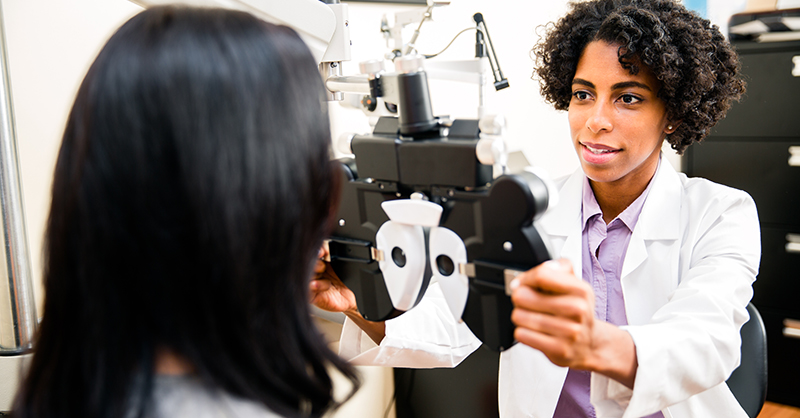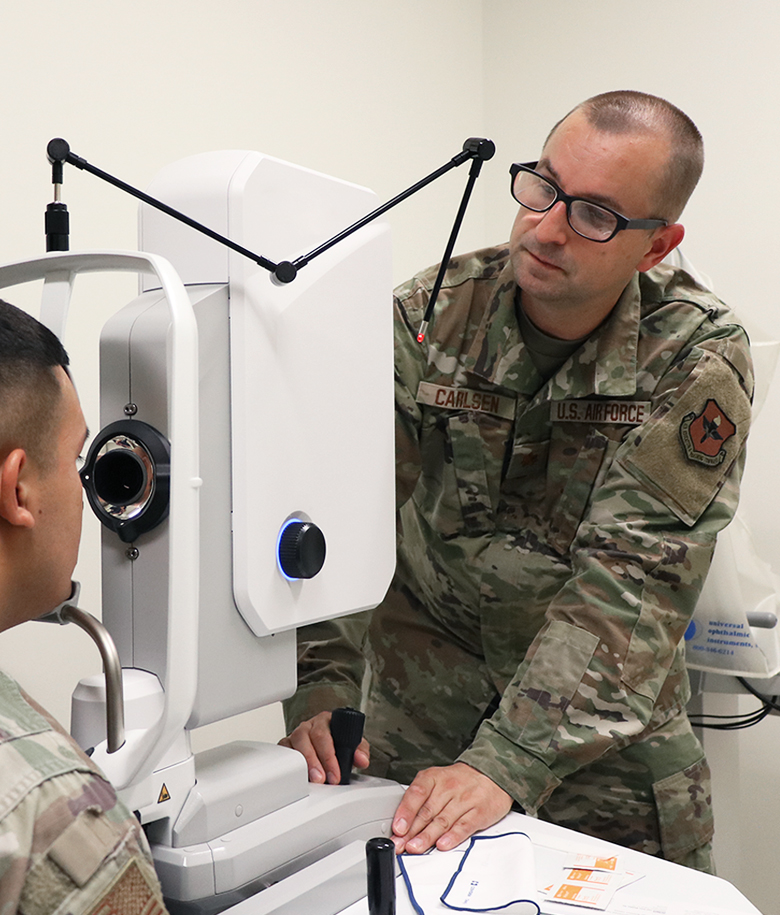Exploring the most up to date Technological Innovations in Optometry and What They Mean for Eye Doctors
From the accuracy of Optical Coherence Tomography to the nuanced insights supplied by AI-driven analysis tools, these technologies are establishing brand-new standards in person analysis and therapy. As these improvements penetrate the technique, eye doctors are encountered with the obstacle of welcoming these tools to boost client outcomes.
Innovations in Diagnostic Devices
Advancing the area of optometry, technologies in analysis tools have changed the way eye treatment professionals analyze and identify aesthetic impairments and eye conditions. The past decade has witnessed significant technological improvements, enabling even more accurate and thorough examinations. Optical Comprehensibility Tomography (OCT), for instance, gives high-resolution cross-sectional photos of the retina, permitting the early detection of conditions such as glaucoma and age-related macular deterioration. This non-invasive imaging technique has ended up being indispensable in contemporary optometric technique.
One more key innovation is the intro of advanced corneal topography systems, which map the surface area curvature of the cornea with accuracy. These devices are specifically valuable for suitable call lenses and detecting corneal problems. Digital retinal imaging has actually transformed traditional ophthalmoscopy, offering in-depth, panoramic views of the retina that help with extensive visual evaluations.
The advancement of wavefront aberrometry has additionally been critical, allowing the analysis of refractive mistakes with unequaled precision (Eye Doctor). This innovation helps in personalizing restorative lenses and enhancing surgical results for refractive surgical treatments. Jointly, these diagnostic advancements empower eye doctors to provide exceptional client care, ensuring very early treatment and customized therapy techniques, eventually enhancing aesthetic wellness results
AI in Patient Monitoring
Building on the foundation of sophisticated analysis tools, the incorporation of synthetic intelligence (AI) in client management stands for a transformative jump for optometry. AI systems are significantly employed to enhance effectiveness, accuracy, and customization in patient care.
Moreover, AI-driven systems assist in streamlined client interactions and management processes. Automated organizing, digital appointments, and customized follow-up strategies not just improve person contentment but additionally maximize time monitoring for experts. These systems can triage clients based on the seriousness of their problems, making sure that those in crucial need get timely interest.
Additionally, AI enhances decision-making by providing eye doctors with evidence-based referrals and therapy pathways. By integrating information from digital wellness documents, AI devices use understandings that notify scientific decisions, decreasing the danger of mistakes and improving patient results. As AI remains to evolve, its duty in person monitoring will likely broaden, improving the landscape of optometric care.
Breakthroughs in Retinal Imaging
In the world of optometry, retinal imaging has actually experienced exceptional technical advancements that are improving analysis capacities and person treatment. Innovations such as Optical Coherence Tomography (OCT) and fundus photography have actually transformed exactly how eye doctors evaluate the retina and envision. OCT, particularly, gives high-resolution, cross-sectional pictures of the retina, permitting for the thorough evaluation of its layers. This capacity is invaluable for early detection and management of conditions like glaucoma, diabetic retinopathy, and age-related macular deterioration.
Enhanced imaging modalities like OCT angiography are additional refining diagnostic precision. This non-invasive method maps blood flow in the retina, using crucial insights into vascular health without the requirement for color shots. Additionally, flexible optics technology is being integrated right into retinal imaging systems to deal with ocular aberrations, providing extraordinary photo clearness. Such innovations assist in the recognition of minute retinal changes that might symbolize condition progression.
Moreover, improvements in expert system are enhancing retinal imaging by enabling computerized evaluation of big datasets. These systems aid optometrists in identifying patterns a sign of pathology, thus improving analysis accuracy more information and effectiveness. Collectively, these innovations are changing retinal imaging into a cornerstone of modern eye treatment, boosting results and increasing restorative opportunities.
Teleoptometry's Growing Function
Teleoptometry is increasingly becoming a vital element of eye treatment, driven by innovations in digital communication and diagnostic devices. This is particularly helpful in country and underserved areas where access to specialized eye treatment is usually restricted.
The assimilation of expert system (AI) further boosts teleoptometry, making it possible for the analysis of visual information and helping in the discovery of ocular problems such as glaucoma and diabetic person retinopathy. AI-powered formulas can rapidly translate intricate imaging data, providing optometrists with valuable understandings that bolster professional decision-making.
Furthermore, teleoptometry supports continuity of care through seamless assimilation with digital wellness records (EHRs), permitting eye doctors to preserve comprehensive patient histories. This ensures that individuals receive personalized and consistent care also when talking to various experts.
Regardless of these advantages, difficulties stay, including guaranteeing data security and managing visit this web-site person assumptions. Teleoptometry stands for a substantial stride in the direction of more accessible, efficient, and patient-centered eye care. As modern technology advances, its function is poised to broaden additionally.

Future Fads in Eye Care
A myriad of cutting-edge fads is set to improve the future of eye care, driven by technical innovations and the progressing demands of patients. One considerable trend is the combination of expert system (AI) in diagnostics, which promises to boost the precision and performance of eye exams. AI formulas can examine substantial amounts of data from retinal pictures, potentially detecting conditions like diabetic person retinopathy and glaucoma earlier than standard techniques.
Furthermore, tailored medication is acquiring grip in optometry, with genetic screening notifying tailored treatment plans. This approach intends to enhance client results by tailoring interventions to individual genetic accounts. Wearable modern technology, such as wise get in touch with lenses, is also imminent, offering real-time surveillance of intraocular pressure or sugar degrees, hence providing continual understandings right into ocular and systemic health.
The adoption of augmented reality (AR) and virtual fact (VR) in training and person education is one more arising pattern. These innovations provide immersive experiences that can enhance understanding and skills both for eye doctors and individuals. As these fads progress, optometrists need to stay abreast of technical advancements to give sophisticated treatment, guaranteeing better client outcomes and complete satisfaction in the vibrant landscape of eye care.
Conclusion

Jointly, these diagnostic developments empower optometrists to provide superior client care, ensuring early intervention and customized treatment methods, ultimately enhancing aesthetic health and wellness outcomes.

As these innovations continue to progress, optometrists have to adapt and integrate them right into method, ultimately maximizing workflow efficiency and raising the standard of eye treatment supplied to clients.